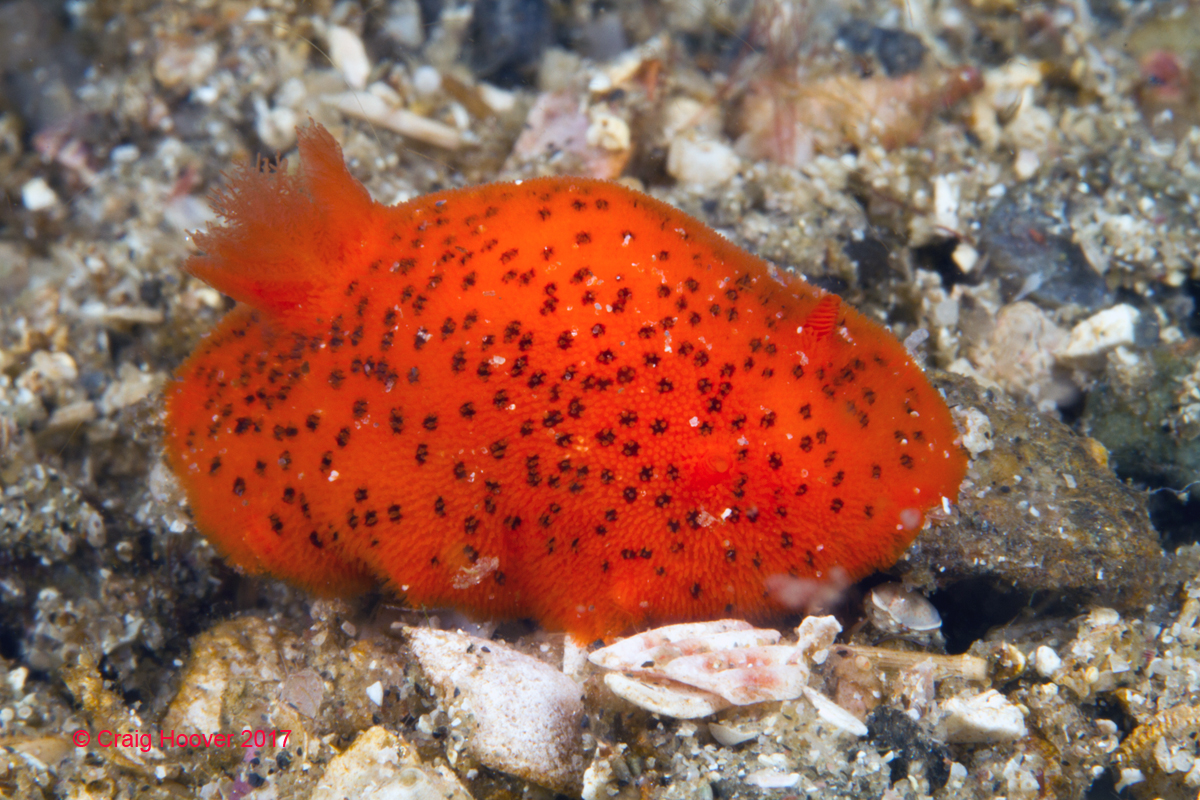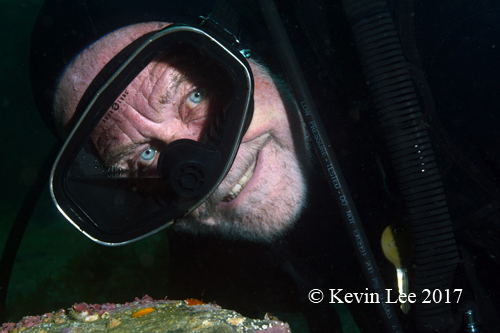 |
Rostanga ghiselini
Image courtesy of Craig Hoover
Rostanga ghiselini Gosliner & Bertsch, 2017
Brand new! New species are coming out of the sea all over, from the recent Atlantic-Pacific Placida complex, to the Gulf of California. Terry and I just (as in 31 October) named this species in honor of our colleague and mentor, Dr. Michael T. Ghiselin, a superb teacher, scientist, philosopher, historian and friend. It’s been over 25 years in the making.
This red to reddish orange dorid with black spots on its dorsum, reaches about 30 mm in total length. The conical rhinophores with transverse lamellae immediately distinguish it from its eastern Pacific congener Rostanga pulchra MacFarland, 1905, which has vertical lamellae. Other comparative morphological details are clearly described in the article.
There is a definite story behind the naming of this species, a true Hunt for Red Dorid! Although I first found it at Punta la Gringa, Bahía de los Ángeles, in 1986, work on it sat on a back burner with other unnamed species. Over the years I found and photographed other individuals in the Bahía de los Ángeles region. When Terry and I finally decided to name it (especially since Michael had lost his Felimare ghiselini patronym, a DNA-synonymization with the earlier F. californiensis), we had to find specimens. Mine had been lost; specimens of the individuals photographed by Wes Farmer and Leroy Poorman were not to be found, neither at the California Academy of Sciences nor the LA County Natural History Museum. I even phoned Wes to see if he might have the animal hidden in his house. A report of its collection in La Paz, resulted in searching for a university collection that no longer exists, but into which specimens were said to have been deposited. So when Craig Hoover and I went to Bahía Magdalena and Bahía de los Ángeles this March, the Red Dorid was on our Search and Find List. The last morning, he dove at Punta la Gringa, while I decided to stay on shore. We took our time at breakfast and then while he entered the water we enjoyed the view and chatted about nudibranchs. He carried some other specimens out to photograph, set them up on a rock, shot images, and then looked over his shoulder—and there was a fine Red Dorid, just sitting there. The timing of serendipity. If we had done anything differently, he’d not have found the beast. He took a photo of it, and we had our holotype!
Mike Ghiselin and I have been down the Baja California peninsula several times, including a memorable visit to the Mulegé area, where we found a rock art site originally described by Leon Diguet in 1895, but unknown since, and got out into the water with Miguel Quintana , who was the owner of the Mulegé Divers shop. Montana buddy Tom Smith (of the Hawaiian nudibranch Ardeadoris tomsmithi fame) accompanied us.
Punta la Gringa is now the type locality for 10 species of nudibranchs, including Bajaeolis bertschi Gosliner & Behrens, 1986, Trapania goslineri Millen & Bertsch, 2000, Peltodoris lancei Millen, 2000, and Doriopsilla davebehrensi Hoover, Lindsay, Goddard & Valdés, 2015. A veritable Who’s? Who? of Nudiphiles.
Congratulations, Mike Ghiselin!
Imperial Beach, Calif
Nov., 2017
Send Hans email at hansmarvida@sbcglobal.net

|
Photo courtesy of Kevin Lee
